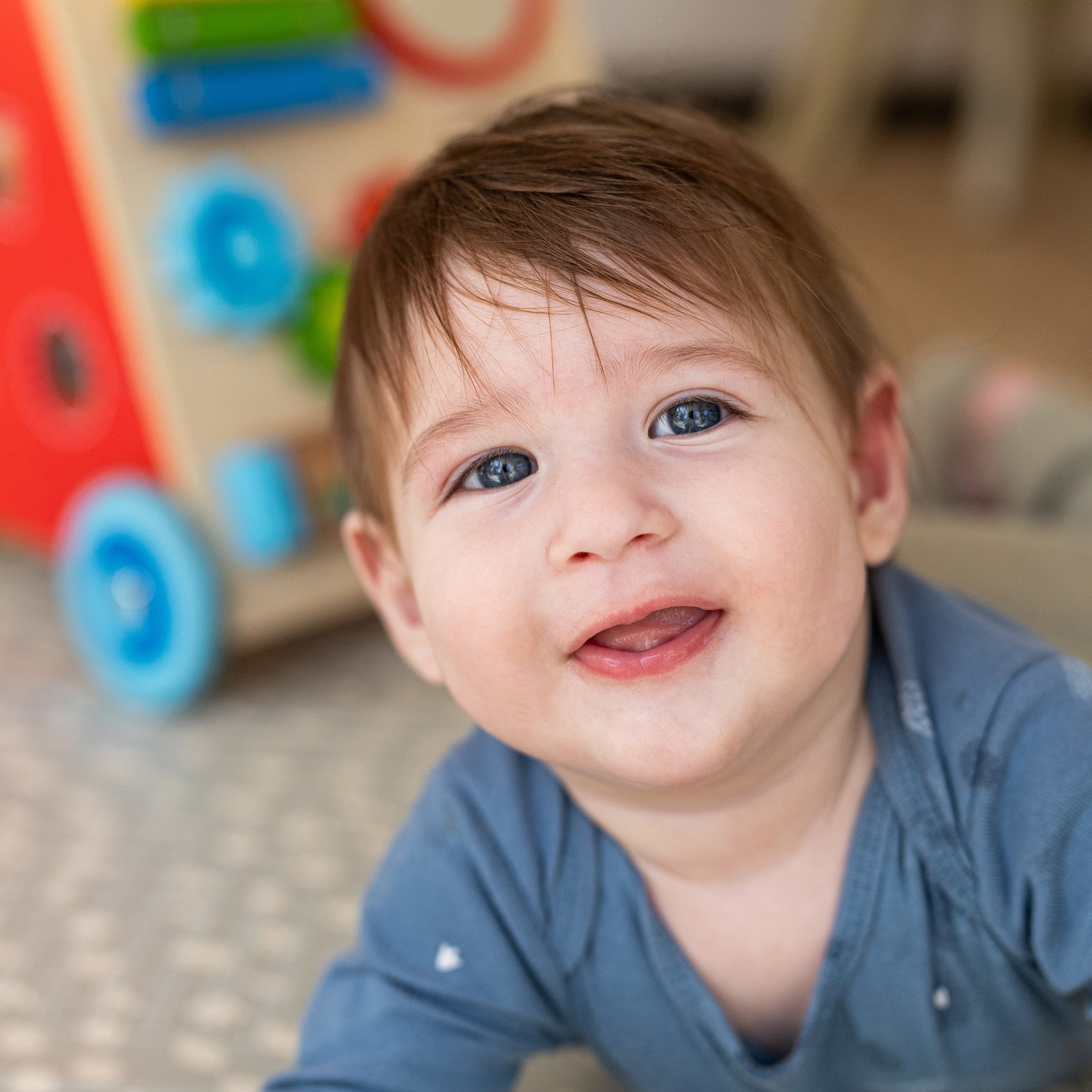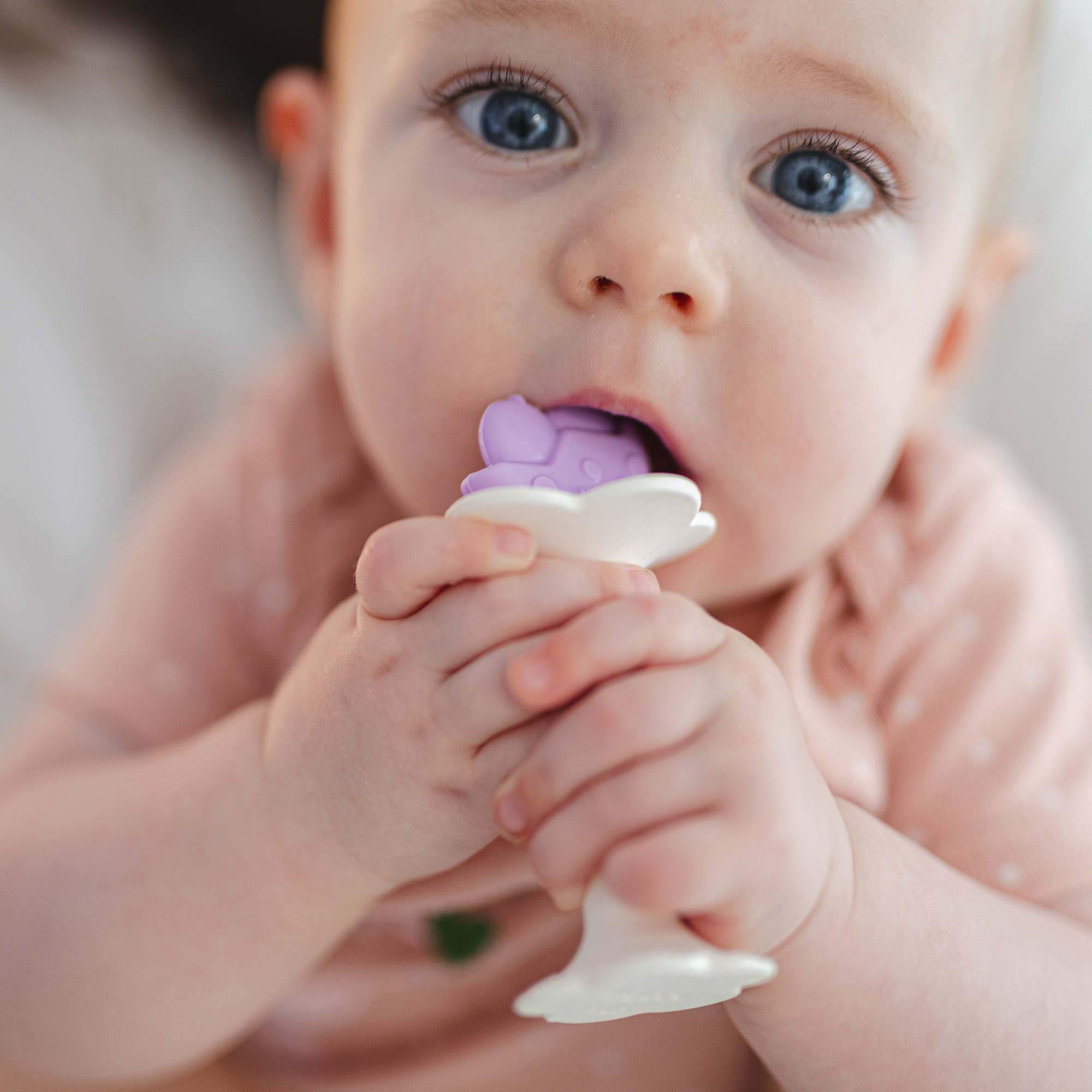Understanding Thrush in Babies: A Guide for Parents
Is your baby cranky during feedings? If so, look in their mouth. If you spot any white patches on the tongue or elsewhere, they may have oral thrush. Oral thrush is a common fungal infection primarily affecting newborns and infants.
Thrush is not typically dangerous, but it can be uncomfortable and make feeding difficult for infants and parents.

What is Thrush in Babies?
Oral thrush, also known as oral candidiasis, is a common fungal infection that many parents encounter in their infant’s first few months. It mainly affects the mouth and is caused by an overgrowth of Candida albicans.
Thrush typically appears in the mouth, affecting the tongue, inner cheeks, and gums. However, it can also spread and affect your baby’s diaper area, resulting in a yeast diaper rash.
Causes of Thrush in Infants
It’s normal for yeast to be found in everyone's mouth and even in the digestive tract. However, an imbalance in yeast’s environment triggers yeast overgrowth, leading to infection.
Several factors contribute to the development of thrush in newborns and infants, including:
- Immature Immune System: Newborns have developing immune systems, making them more vulnerable to fungal overgrowth.
- Antibiotic Use (in Mother or Baby): While antibiotics are necessary for treating some bacterial infections, they can also disrupt the natural balance of bacteria in the mouth. This can create an environment that promotes yeast overgrowth, leading to thrush.
- Breastfeeding: Candida yeast can be present in the mother's breasts, resulting in nipple thrush, which includes burning and sore nipples, along with sharp pain during or after feeds. The yeast can be transmitted back and forth between the mother's breast and the baby's mouth during breastfeeding. If your baby has thrush, you might also have a yeast infection on your nipples, or the reverse may also be true.
Signs and Symptoms of Thrush in Babies
Recognizing the signs and symptoms of thrush can help parents seek treatment early and alleviate their baby's discomfort sooner. Here's what to look for:
- White Patches in the Mouth: The most telling sign of thrush is the presence of white patches in the mouth. These patches often resemble milk curds and stick firmly to the tongue, inner cheeks, or gums. Unlike milk residue, these patches will not easily wipe away.
- Redness or Soreness: The affected areas might appear red and inflamed, causing discomfort in the baby's mouth.
- Fussiness During Feeding: Difficulty or fussiness during feeding could be a sign that your baby has mouth pain caused by thrush. This may lead to decreased milk intake.
- Diaper Rash: In some cases, babies with thrush might also develop a yeast diaper rash.

How to Get Rid of Thrush in Babies
If you suspect your baby may have thrush, it's best to consult your pediatrician for diagnosis and proper treatment. To help soothe your baby's discomfort and prevent the spread of thrush, consider the following tips:
- Antifungal Medications: Pediatricians will prescribe an antifungal in liquid or tablet form that you apply directly to your baby’s mouth.
- Wipe the Mouth: After each feeding, use a clean, damp gauze pad or washcloth to wipe your baby’s mouth and tongue clean to prevent yeast growth. Be gentle, as you can easily irritate the delicate tissues in the mouth.
- Baby Toothbrushes and Gum Cleaners: You can use Gum cleaners or soft-bristled baby toothbrushes to clean your baby’s mouth after feedings.
- Soothing Gels: Your pediatrician may recommend a safe, over-the-counter soothing gel to help with mouth soreness.
Tips for Preventing Thrush in Newborns
While knowing how to deal with thrush is important, prevention is always the best defense. Here are some tips to help prevent thrush in your baby:
- Sterilize Bottles and Pacifiers: Regularly sterilize bottles, pacifiers, and other feeding equipment to eliminate any bacteria that may be forming.
- Practice Good Hand Hygiene: Wash your hands with soap and water before prepping bottles, breastfeeding, or touching your baby’s mouth. As simple as it is, it can make a big difference.
- Treat Yeast Infections (Breastfeeding Mothers): If you're a breastfeeding mother with a nipple yeast infection, it's important to see a doctor. They can recommend the best treatment to prevent the yeast infection from spreading to your baby's mouth.
When to Consult a Pediatrician About Thrush
If you suspect your baby has thrush and the symptoms worsen or don't improve, it's important to consult a pediatrician. This is especially true if the thrush is causing discomfort or affecting your baby's feeding.
FAQs
What causes thrush in newborns?
Thrush is caused by a fungus infection in newborns. It can occur due to an immature immune system, antibiotics, or being transferred from the mother to the baby during breastfeeding.
What are the signs of thrush in babies?
Common signs of thrush include white patches, redness, and fussiness during feeding. Thrush can also cause a diaper rash.
How can I treat my baby’s thrush?
If you suspect your baby has thrush, it's best to consult your pediatrician for proper diagnosis and treatment.